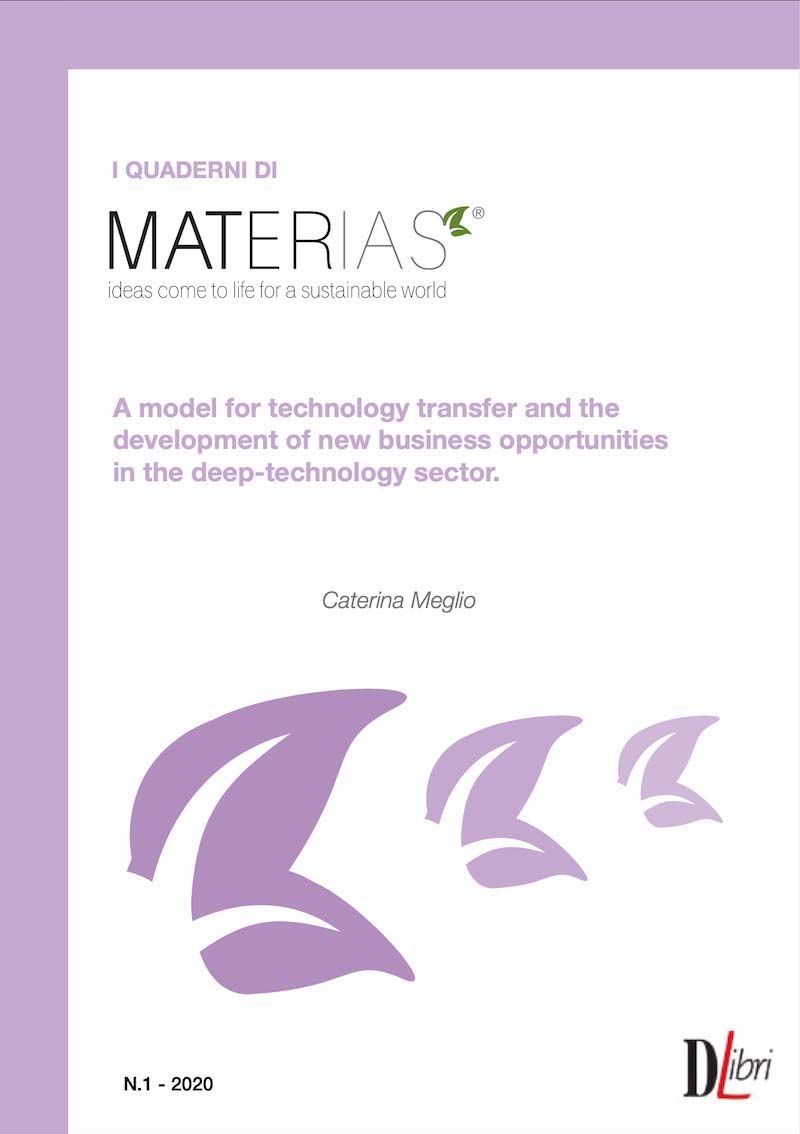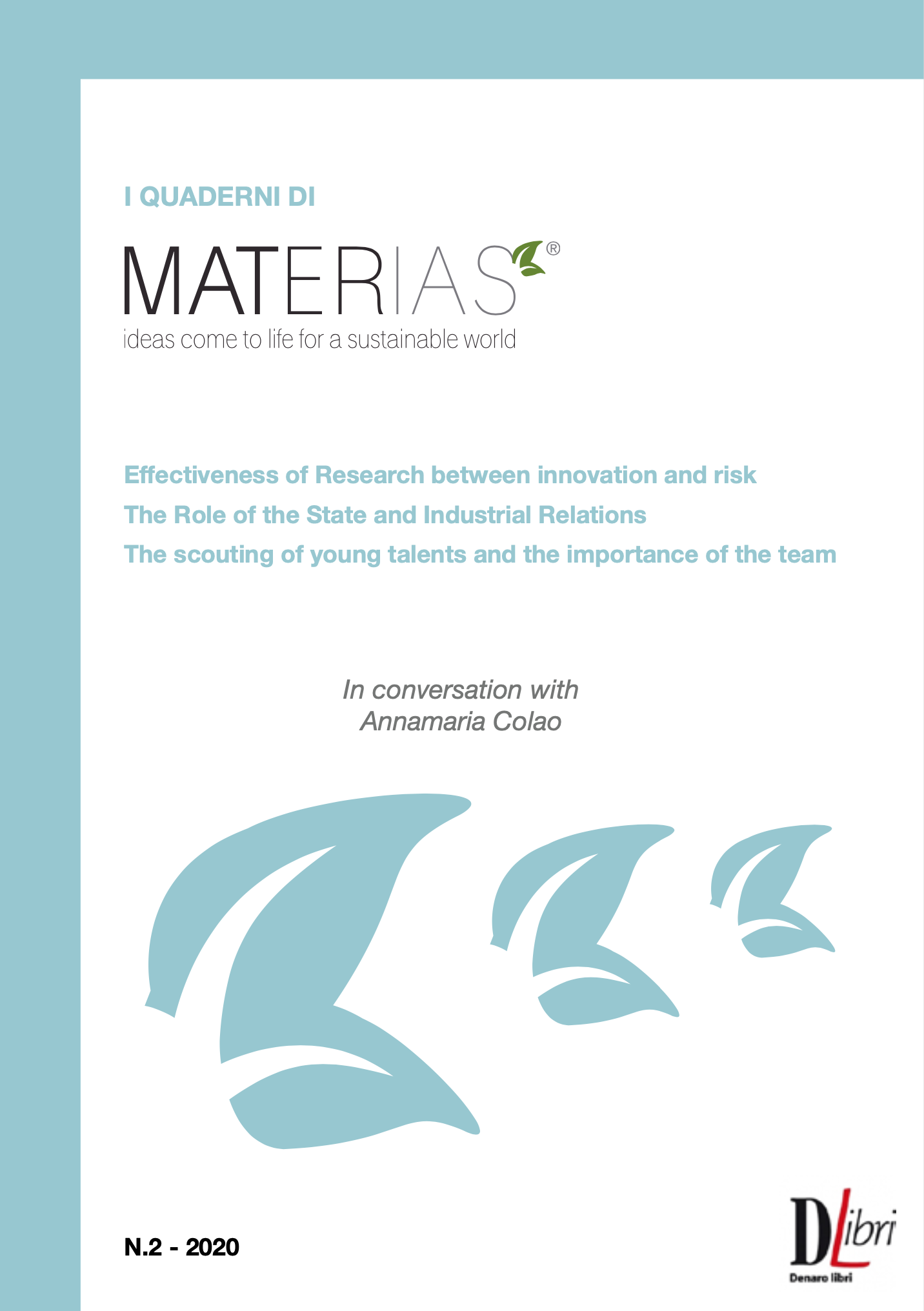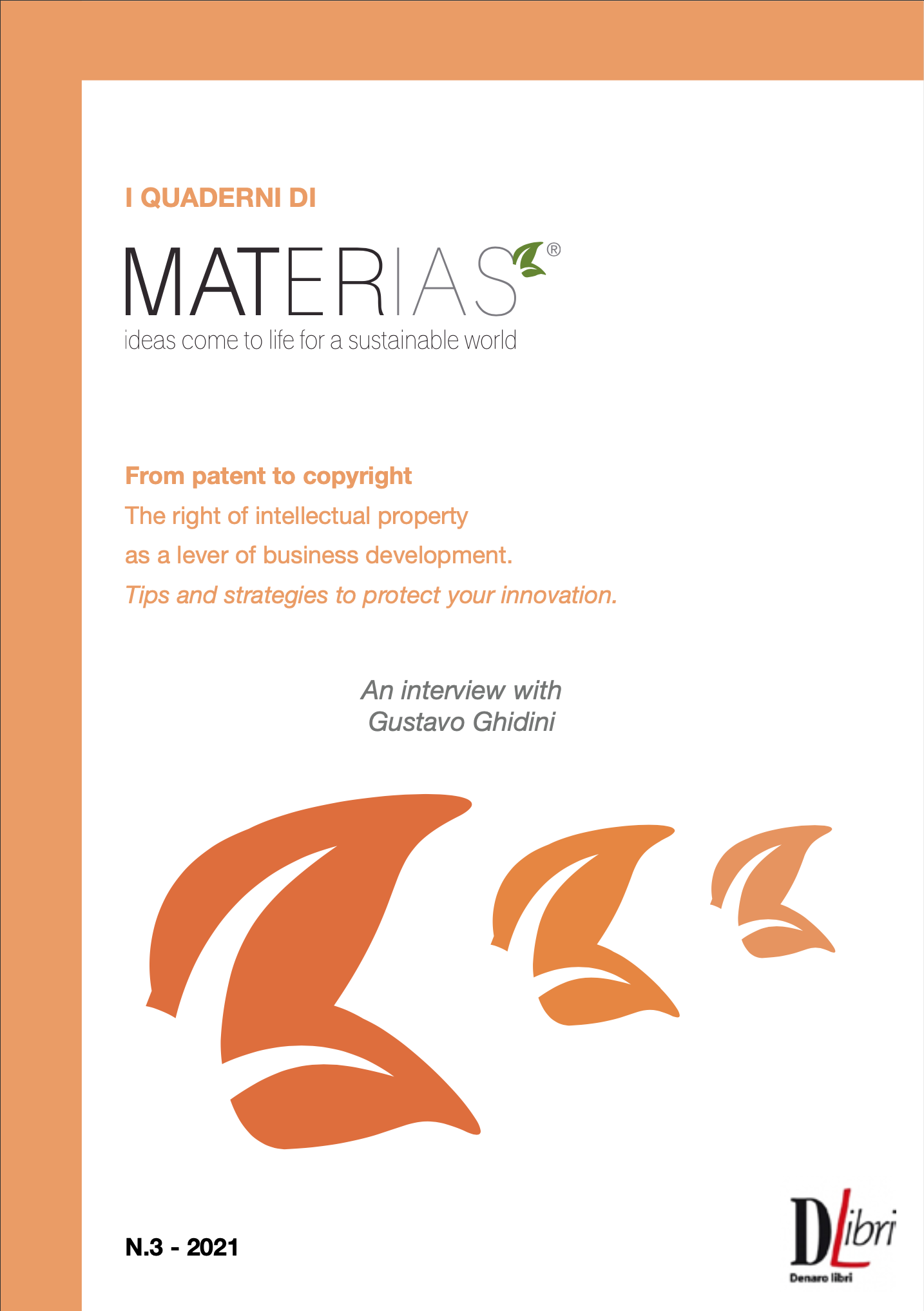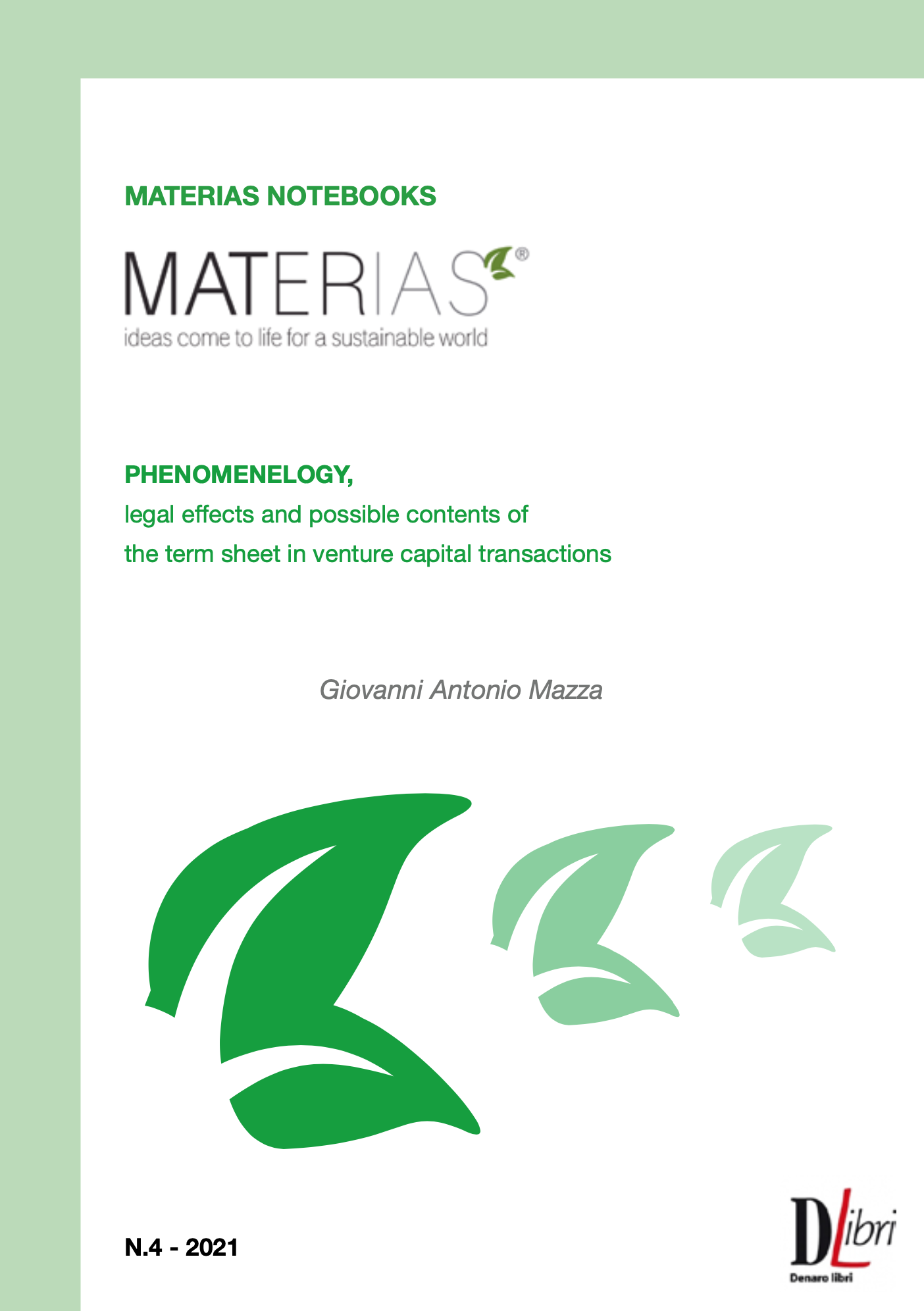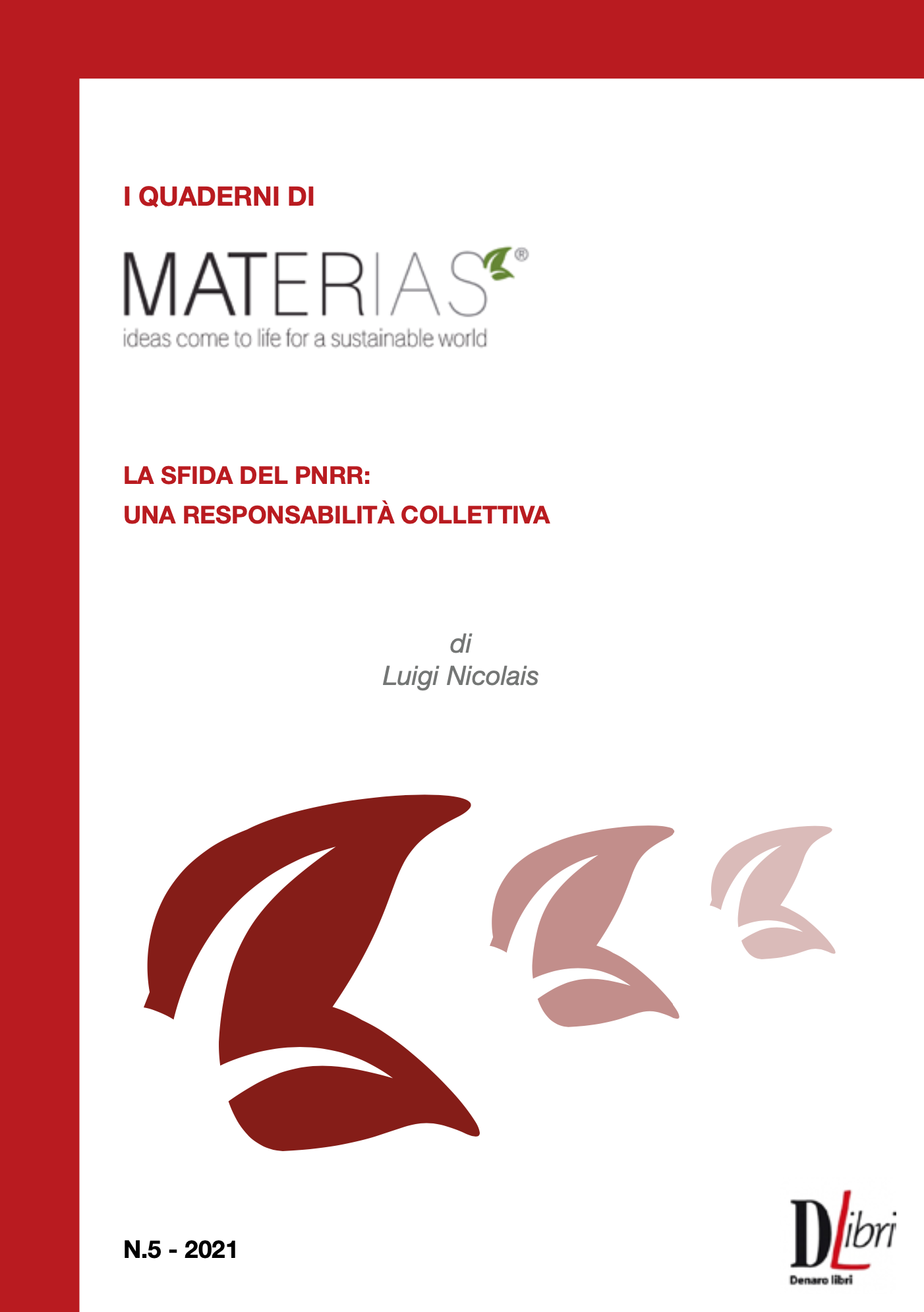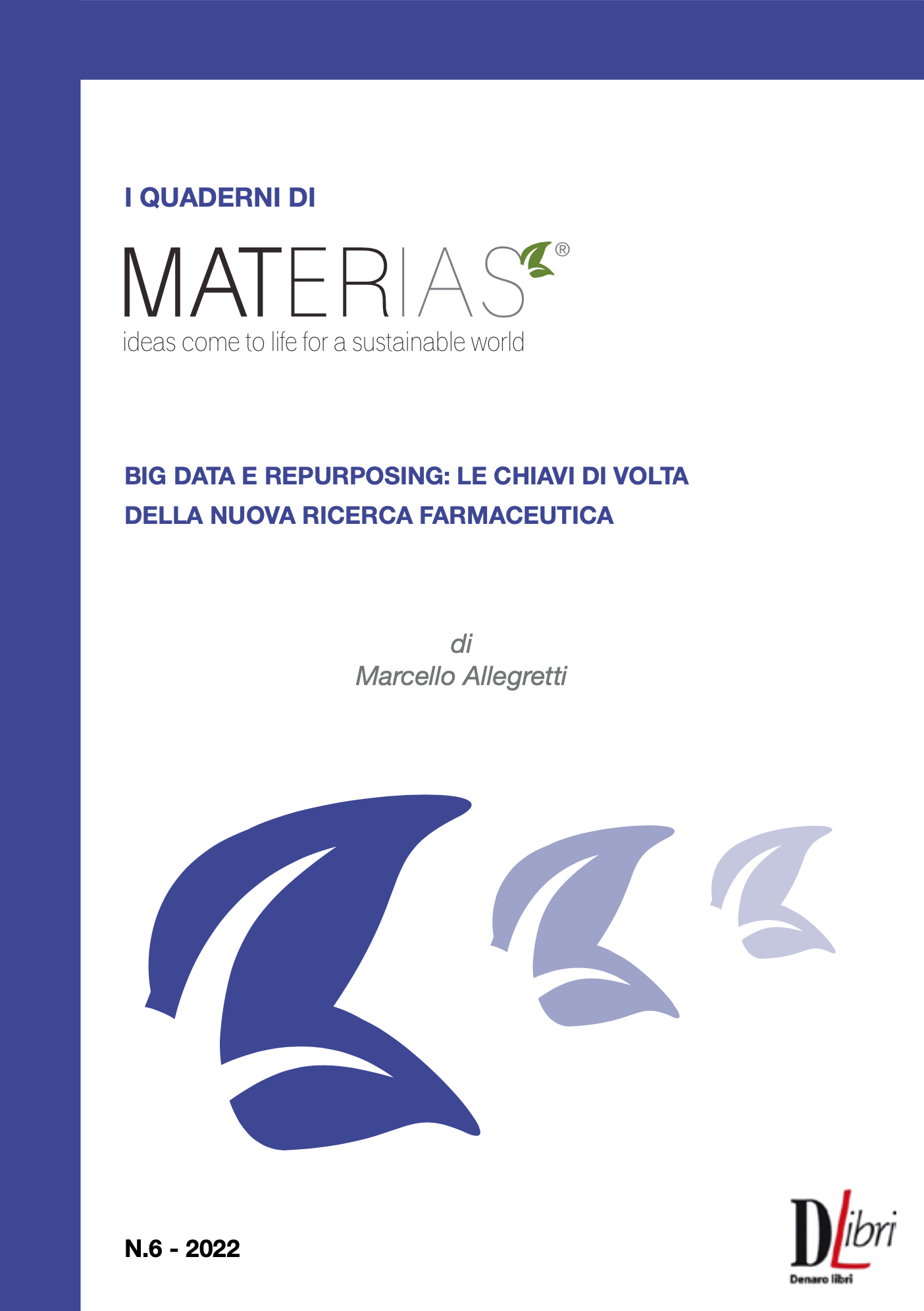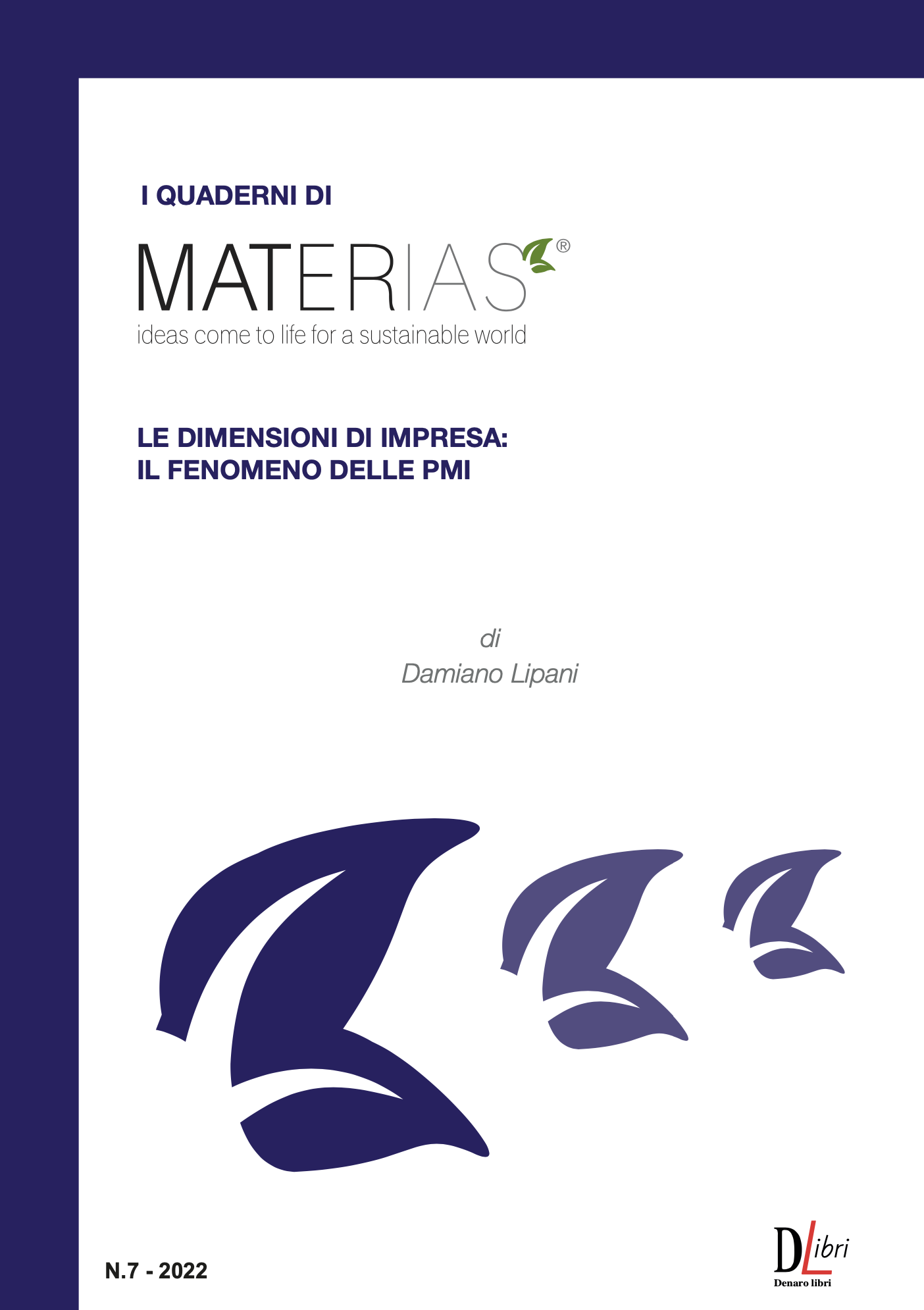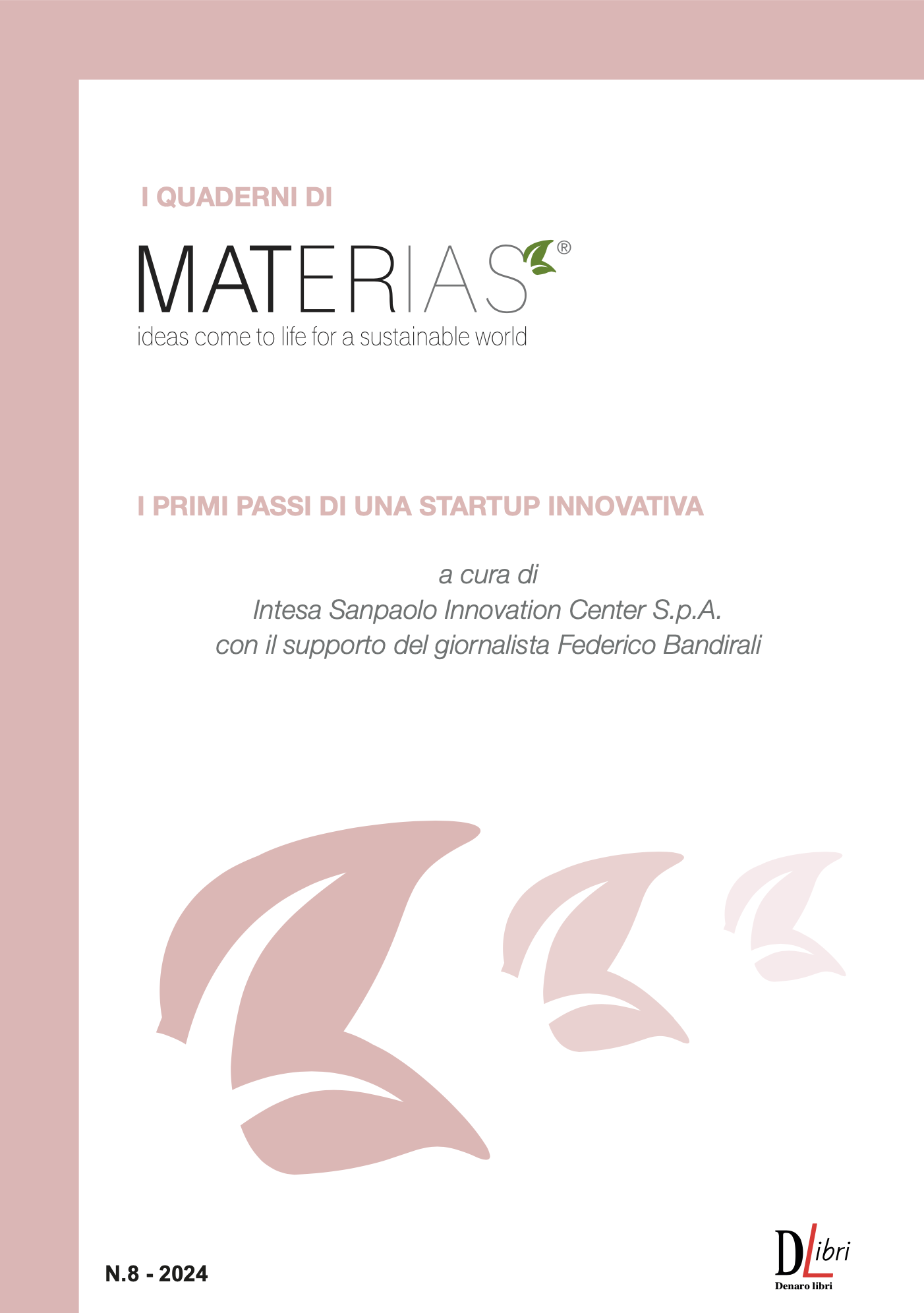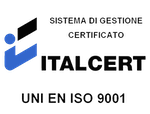N° 3
MATERIAS NOTEBOOKS
From patent to copyright.
The right of intellectual property as a lever of business development.
Tips and strategies to protect your innovation.
An interview with Gustavo Ghidini
Emeritus Professor at the University of Milan
Senior Professor of Industrial Law at the Luiss University of Rome
03 - 2021
ISBN: 9788899620080

Luigi Nicolais, President and founder of Materias
Today more than ever, politics needs science.
In a delicate and fragile phase of our history, which Gramsci would have defined as the interregnum, the political decisions adopted must be informed and be born as the result of a serious scientific, economic and social analysis of the problems of our country system and of the potential opportunity. Our great intangible heritage in the field of research and innovation is destined to assume an increasingly central role, through a rational contribution to the transition of a knowledge-based society. In this issue of Materias notebooks we talk about intellectual property, a strategic issue that has significant implications, not only from an economic and employment point of view, but above all in terms of territorial development.
In this global scenario, patents and related rights give a competitive advantage not only to those who protect them nationally and internationally, but also to those who are capable of enhancing them. It is a complex activity that requires an innovation ecosystem based on active collaboration between public and private and a constant effort of coordination and harmonization in a win-win perspective.
The results of a recent joint report published by the European Patent Office (EPO) and the European Union Intellectual Property Office (EUIPO), which analyzes the relevance of intellectual property rights for the EU economy, are Two macro-trends emerged: the increasing importance acquired by intangible assets in relation to tangible assets and the evidence that companies that make intensive use of intellectual property rights (IPR) generate 45% every year of GDP (EUR 6 600 billion) in the EU, representing 63 million jobs (29% of the total).
Given the remarkable data, it follows that intellectual property is one of the cornerstones of the European and international economy and for these reasons it must be encouraged and supported and our country can play its role by enhancing the made in Italy research of young innovators and counteract the sad phenomenon of the brain drain.
In this process all the actors must participate in order to create a virtuous circle that involves both innovation policies and the university and research system in the enhancement of intellectual property.
Italy in the world is synonymous of creativity and it is the task of all of us, to give a clear signal to enhance and protect ideas... Because what is an idea if not that human thing par excellence?
The Applicant Guide: procedure for filing of patent applications
How many times have we heard the expression “I have an inventive idea” in the academic, business and professional world? Certainly, many times over. In how many cases, however, can we say that these ideas have then become inventions, trademarks, registered patents and/or consolidated procedures and practices available to society or successful products within everyone’s reach? Rarely.
Often this involves a thousand difficulties. In this new issue of the Quaderni di Materias, we are hosting the lawyer and professor emeritus of the University of Milan and professor of industrial law at the Luiss University of Rome, Gustavo Ghidini.
Thanks to his prestigious contribution, he will explain to us what lies behind this intricate skein, the pitfalls of the market, the traps hidden in the bureaucracy and how improvisation sometimes represents an insurmountable obstacle for brilliant ideas that could prove to be of great benefit for the community but often that end up dying in the bud or, even worse, moving on to the competition. Here is a brief guide to protecting your innovations from competitors and approximation, avoiding making false steps in the early stages of the long and tortuous path towards intellectual protection.
Professor Ghidini, today the success of an innovative technology moves more and more through the intellectual protection of the idea. Above all, in the scientific field. The researcher’s intuition is waiting to be valued and protected to reach the market. What is the first thing you would like to recommend to those who have innovative research in their hands and aim to transform it into a product for the market?
“The first thing to do is to ask a reliable and serious Patent Office to carry out an international ‘prior art search’ to verify that the invention has not previously been patented - or has been applied for - by third parties, Italians or foreigners. In the event of a positive answer for the inventor, it is necessary to contact a patent lawyer with the aim of assisting the Patent Office on a legal level with respect to the formulation of the patent application to be filed. For example, suggesting a double deposit as an invention and a utility model, if the innovation consists of an original arrangement of known devices. And also, suggesting a formulation of the application that covers several ‘variations’ of the basic invention, in order to prevent counterfeiting for equivalents”.
And if not?
“If not, it is necessary to protect the idea and not talk about it, and then - again with the guidance of an expert lawyer in the field - take the following steps. A significant economic value must be attributed to the invention, also in the financial statements, in the item intangible assets, parameterized both for direct exploitation and for licensing to third parties. This is also useful for the purpose of compensation for damages in the event of a breach of secrecy by employees and / or collaborators or competitors. After that it will be necessary to affix on documents and correspondence also within the company (employees involved in R&D, in particular) and / or in any correspondence with suppliers and distributors, clear warnings such as ‘SECRET’, ‘strictly reserved for Mr. ...’ and similar. In short, warnings that indicate with certainty the will of the owner to keep the information relating to the design confidential. In all these steps, it is essential to use professional experts. The ‘do it yourself’, in the field of patents, can very easily produce irreparable damage and loss of precious opportunities”.
What is missing?
Could we also speak of intellectual property culture in Italy without appearing to be extremely visionary or dreamers? Yes, we can. The Italian entrepreneurial system is largely made up of small and medium-sized companies, realities born from the intuition of individual workers / professionals / craftsmen or along the borders of large industries, as satellites of large international giants. These are private initiatives that base their know-how on wisdom, knowledge, skills and vision, but which do not always take the opportunities of defending their origins or the possibility of expanding their business while protecting successful practices and results. These obstacles risk holding back industrial and business development processes that would otherwise be inexorable and disruptive. In this scenario, the intellectual property remains increasingly in the background, becoming almost a taboo subject, which is approached in extreme cases without having the slightest awareness of the lever that it can instead activate in terms of business development.
Professor Ghidini, how important is the knowledge of intellectual property protection tools in the context of the relationship between companies and inventors?
“Knowledge of these tools is very important, but the problem in Italy is that often only large companies have an ‘industrial culture’ of intellectual property (IP). And we know that 90% of our entrepreneurial system is made up of small businesses. And these small and medium-sized enterprises - even if there are excellent exceptions - only worry about IP when they have a problem: if one of their patents is counterfeit, or if, on the contrary, they want to attack someone else’s patent, or are an active part of unfair competition, etc. . Then ‘they go to the lawyer’: for that, or other, single case. In short, they do not consider the use of IP as an ordinary, constant tool for doing business”.
Can the exploitation of IP turn out to be a strategic asset for the company? Is it a lever of innovation?
“Intellectual property rights (IPR), ie patents, trademarks, copyrights, are not only precious tools for protecting innovations, but also for industrial and commercial development. This takes place through licensing policies, including cross-licensing, with third parties (suppliers, distributors. And again, through brand licenses, from merchandising to franchising, to selective distribution, export and / or import licenses. In short, a dynamic role, which ‘multiplies’ the chances of business development: both in a commercial sense and in terms of territorial development”.
A figure in charge of the defensive/offensive use of intellectual property rights
The protection and enhancement of intellectual property can become a real job. Of course, this is a new professional figure, which it is difficult to find today in small contexts but who is beginning to get noticed even in our country. Especially in large industries. The IP Strategist or Intellectual property manager (IP Manager) is the one who deals with intellectual property and also innovation. His “daily bread” is called copyright, trademarks, brands, domains, patents, software, design, marketing and advertising of intellectual property, trade secret, security, data base, biotechnology, brand valuation, negotiation and drafting of contracts , exploitation and transfer of intellectual property rights, resolution of commercial disputes, foreign markets. This requires constant updating in terms of laws, regulatory interventions and constant contact with the interlocutors of the company he represents. It acts as a link between the firm (which is usually external) responsible for filing patents, lawyers and researchers. Technology, especially digital technology, seems to be experiencing a favorable and unstoppable trend in the global market but is also easily scalable.
Professor Ghidini, how to evaluate the opportunity to manage the company’s intangible assets and its exclusive rights in order to enhance the combination of innovation and brand identity?
“This is a great opportunity. Only large companies - and not all of them - have a professional figure of ‘IP strategist’. A key figure who deals with everything related to intellectual property rights (IPR) and the discipline of unfair competition (CS). We could define it proactive exploitation in the sense of policies. I would add that SMEs could make a ‘consortium’ effort to equip themselves with figures of this type ‘in common’: as is the case with agents and multi-firm distributors. And it would also be very useful for universities to set up a course, or a Master, dedicated to the training of this professional figure: the IP Strategist”.
A free, paying access system for using copyrighted content on the web
There is already a Directive on copyright on the Internet, the 2019/790 of the European Union, which aims to harmonize the EU regulatory framework for the use of copyrighted content on the web. But it is often ignored or, even worse, snubbed. Even today, the possibility for publishers to request payment for the use of their texts by sites for profit is becoming increasingly difficult.
What do you think of the right to compensation of publishers of newspapers and magazines regarding the use of their content by web platforms?
How could the Copyright Directive best apply in our country?
A paying free access system should be established, managed, in default of private inter-individual agreements, by copyright management companies such as SIAE. This system would allow publishers to be paid in proportion to the sales of individual publications and the breadth of the text used by the platforms, without slowing down the speed of information circulation. A non-exclusive copyright paradigm should therefore be adopted, but open and paid for. This is a paradigm accepted in the copyright law (Article 99.1) and in the Civil Code (Article 2578) with regard to engineering and similar projects. As with a telepass, in which you pay according to the displacement, and the bar rises without making you stop. So we need a Telepass for copyright on content produced by newspapers and magazines and used by web platforms!
Professor Ghedini, how can artificial intelligence be protected through patents and copyrights?
“An ambiguous situation, but in the process of being overcome in favor of the admissibility of patents and copyright. In a nutshell, if a patent is presented with the indication of a robot as the author, it is currently quite probable (with the exception of China, of which I will speak immediately) that both in the EU and in the US the protection will be ‘rejected’. What is the reason? patents and copyrights were established to protect the inventions of man, not of a ‘machine’. However, on thousands and thousands of ‘robotic’ inventions, patents are still requested and granted, and copyright recognized, as they are presented as software inventions - patented for decades now - designating as human authors the designers and engineers of the software that uses a ‘smart’ algorithm. The algorithm is software. As a Shenzen Court recently ruled (November 2019), judging an article written by a robot, the human author is there: the team of engineers who created the algorithm to perform a certain function - wanted by the team - and fed it with the original data on which to ‘work’ and produce the result. This is a realistic and fair solution, clearly extensible to the field of patents. It is a right solution because it protects the innovations born from a human idea that directed and ‘fed’ the robot and encourages the development of a technology that increases the technological, scientific and cultural heritage”.



